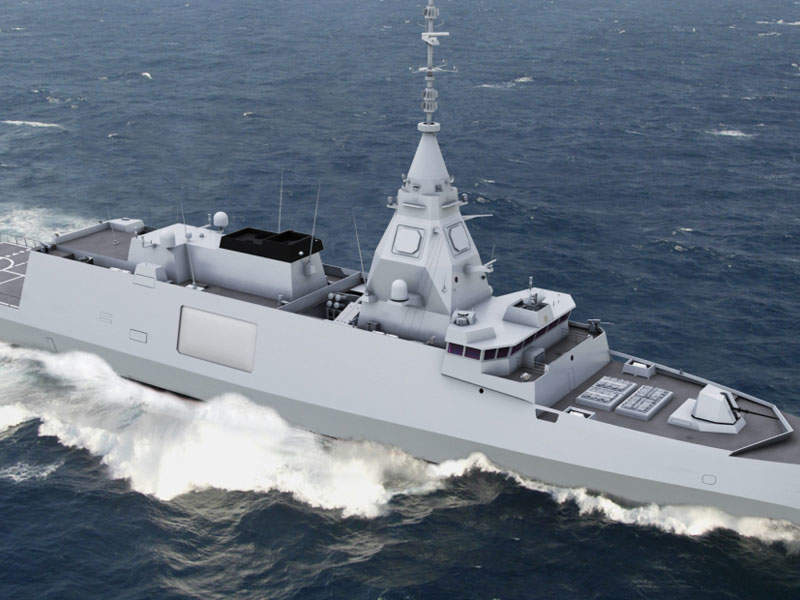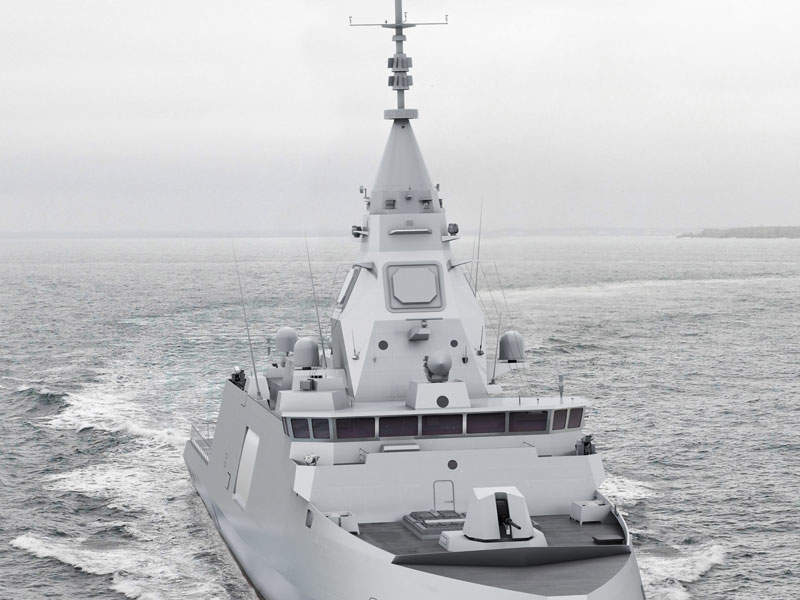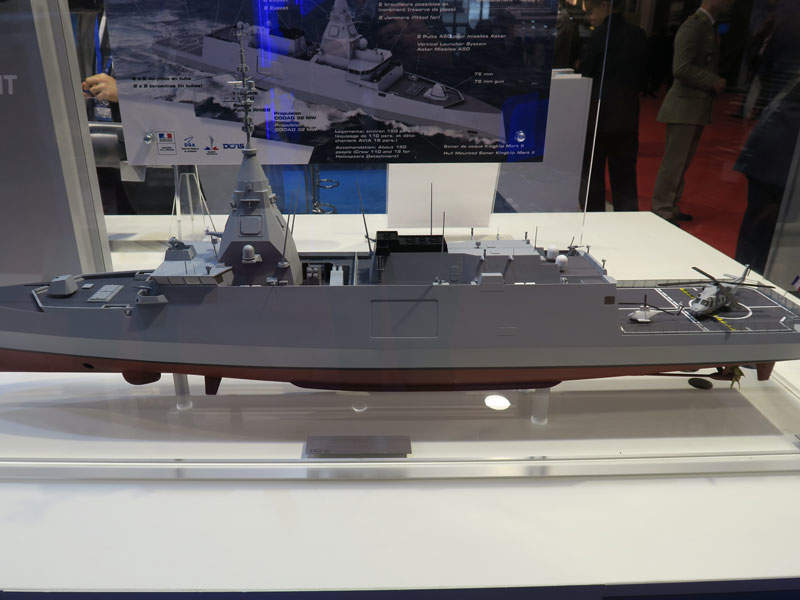FTI (Frégate de Taille Intermédiaire) frigates are French Navy’s future intermediate-size frigates meant to meet anti-submarine warfare requirements.
A prototype of the export variant (designated BELH@RRA) of the French Navy’s future FTI frigates was unveiled during the Euronaval trade show held in Paris in October 2016.
The French Navy version is being developed by naval shipbuilding company Naval Group in collaboration with the French Defence Procurement Agency (DGA) under the FTI medium-size frigate programme.
Naval Group and Thales were awarded a contract for the construction and delivery of five FTI frigates for the French Navy in April 2017. Under the contract, deliveries will begin in 2023 with service entry expected in 2025. The steel-cutting ceremony of the first FDI frigate was held in October 2019.
The heavily armed Belharra-class frigate can be deployed in a wide range of missions such as anti-surface warfare, anti-submarine warfare, anti-aircraft warfare, patrol, maritime security, control of exclusive economic zone (EEZ), asymmetric warfare, and special forces activities.
French Navy’s FTI frigate design and features
The FTI medium-size frigate will feature a modular design with increased self-defence and long-range capabilities.
Overall length and midship beams of the ship are 122m and 17.7m respectively. With a displacement of approximately 4,500t, the frigate will carry up to 150 personnel, including 110 crew and 15 for helicopter detachment.
The ship will incorporate digital technologies for data processing and detection of evolving threats. Its wheelhouse will be positioned in the middle section.
A hangar and flight deck located at the stern will of the frigate allow for the operation of a single unmanned rotorcraft system and / or NH-90 medium-class military helicopter equipped with FLASH-based dipping sonar and MU90 lightweight anti-submarine torpedoes.
The medium-size frigate will additionally carry rigid-hulled inflatable boats for patrolling and transportation. It will have the capacity to provide 360° surveillance with a single mast, which brings all aerial sensors together.
Anti-aircraft and anti-submarine armament
The FTI will be armed with a variety of anti-aircraft and anti-submarine armament to attack aircraft and submarines and their crew.
An Oto Melara 76mm or 127mm naval gun will be mounted in a gun turret located in the bow deck to fight against enemy aircraft, submarines, missiles and ground-based threats.
Defence against littoral and coastal land threats will be provided by eight Exocet MM40 Block 3 all-weather weapon systems.
The Belharra-class frigate will also be fitted with two eight-cell A-50 type Sylver vertical launch systems for Aster 15 surface-to-air missiles in the bow, two 20mm remotely-operated weapons at the rear, 2×2 deck-mounted torpedo tubes for MU90, and an anti-ship missile decoy launching system.
Navigation and communication systems on board FTI frigate
The frigate will be equipped with efficient countermeasures, navigation and communications equipment manufactured by Thales.
They include Sea Fire 500 multi-function active fixed-array antenna radar, Kingklip Mark II hull-mounted sonar, Aquilon integrated naval communication system, radar and communications electronic support measures for electronic warfare, jammers, and a compact version of the combined active-passive towed array sonar (CAPTAS-4).
A non-rotating IFF (identification friend or foe) antenna system will equip the frigate to provide surveillance and monitoring at sea.
Combat management system of the Belharra-class frigate
The FTI frigate will be equipped with DCNS’ ship enhanced tactical information system (SETIS) combat management system, which provides the operator with improved decision-making and battle management capabilities.
Featuring man-machine interface, the SETIS system integrates onboard combat systems, command support modules and planning tools.
Propulsion and performance of French medium-size frigates
Propulsion for the multi-mission frigate will be provided by a 32MW combined diesel and diesel (CODAD) propulsion system.
The mid-size frigate will have a maximum speed of 27k and a range of 5,000nm at a speed of 15k.
Contractors involved
Thales was contracted to supply latest-generation navigation and communications equipment, including sonar suite, IFF, and electronic warfare suite, for the frigates. MBDA is responsible for integration and services to support missile-firing installations.
Axima is supplying heating, ventilation and air conditioning (HVAC) systems, while CNIM received a contract to provide sonar hatches and torpedo hatches. Ixblue was selected to deliver navigation units and computers.
The medium calibre artillery systems are supplied by Leonardo, while MTU is providing the diesel engines. Naval Group also chose Safran Electronics & Defense for the optronic identification system.






